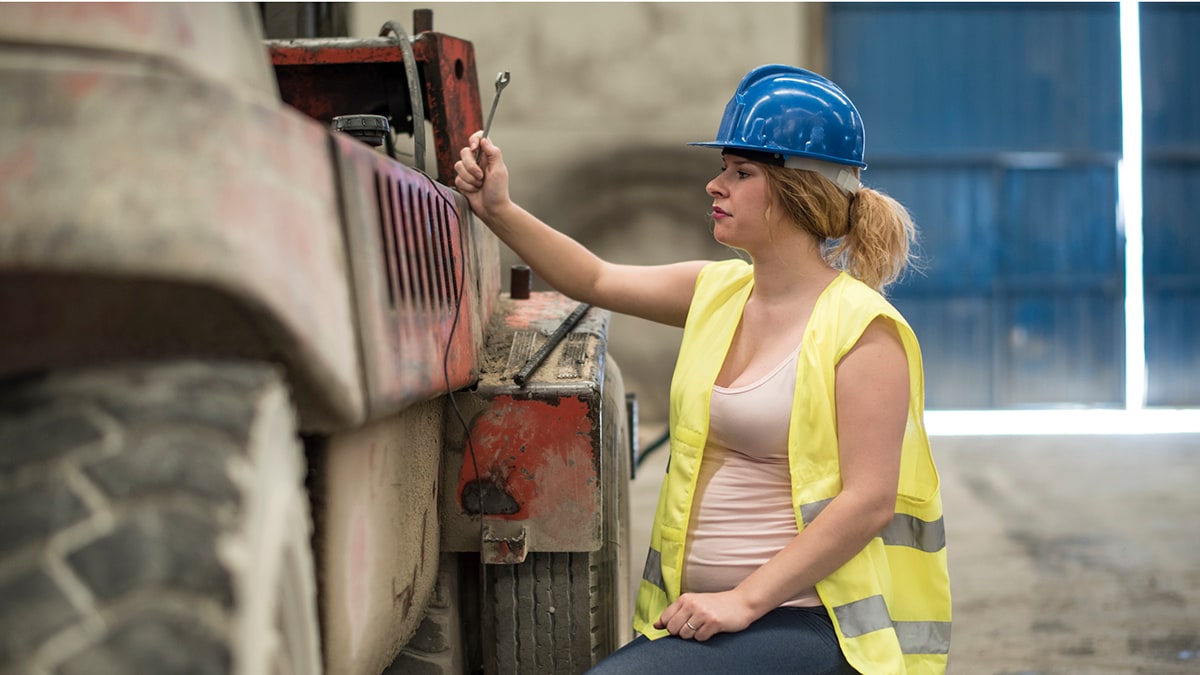Key points
- Changes in body size can affect how well personal protective equipment (PPE) fits and functions.
- Changes to body size, weight, and center of mass during pregnancy can make musculoskeletal injuries more likely.
- High physical demands during pregnancy might increase the risk of adverse birth outcomes like miscarriage and preterm birth.

Understanding physical demands

Physical demands during pregnancy can include:
- Lifting heavy objects
- Standing for long periods of time
- Repeatedly bending at the waist
Why I should be concerned about exposure
Everyday physical activities aren't a cause for concern. In fact, moderate exercise during pregnancy with your doctor's approval can help promote a healthy pregnancy. However, certain physical demands can put some workers at risk.
High physical demands at work, like prolonged standing or heavy lifting, might increase the chance of miscarriage or preterm birth. Some physical demands at work might be linked with menstrual disorders, which could reduce fertility.
To make room for a developing baby, a pregnant woman's hormones cause changes in the ligaments and joints in the spine. These changes can make a pregnant woman more prone to musculoskeletal injury from physical job demands. This can happen even before someone "looks" pregnant or starts to show.
During late pregnancy, changes in body size and body weight can impact balance. These changes also impact postures used to perform physical demands at work. Changes in balance and posture might increase the risk of falls and musculoskeletal injury.
Who is at risk
Many types of jobs can involve high physical demands, including:
- Healthcare workers
- Manufacturing workers
- Construction crews
- Service workers and flight attendants
- Firefighters and law enforcement officers
- Childcare providers and teachers
- Farm and greenhouse workers
What I can do to reduce or eliminate exposure
Talk to your doctor about what level of physical job demands is safe for you. This may be partially based on your health, physical fitness level, and stage of pregnancy.
Discuss these provisional recommendations for lifting during pregnancy with your doctor. (Infografía en español)
If you are pregnant and working, you may want to reduce or avoid:
- Stooping, bending, or squatting often
- Lifting heavy objects from the floor
- Lifting heavy objects while bending or reaching
- Lifting overhead or reaching
- Standing for 3 hours or more
If you are pregnant and work in a physically demanding job, you may benefit from sitting down during breaks.
Resources
Getting help
You can talk your supervisor or occupational safety officer about the physical demands in your job.
For information on the Pregnant Workers Fairness Act, please see resources from the U.S. Equal Employment Opportunity Commission (EEOC) website.
Talk to your doctor about potential hazards at work. Make sure to mention the type of physically demanding job tasks you do.
Where I can get more information
View an infographic on provisional weight limits for lifting during pregnancy. (En Español).
Read about provisional recommended weight limits for manual lifting during pregnancy and clinical guidelines for occupational lifting in pregnancy.
